Interest Rates & Yield Curves
By Colin Twiggs
November 1, 2007 4:00 a.m. ET (7:00 p.m. AET)
In an attempt to make the newsletters more readable, we will
trial splitting the weekly coverage in two: gold, oil and forex
on Tuesdays; the economy and interest rates on Thursdays.
Please give us your feedback when we conduct a survey, in a few
weeks.
These extracts from my trading diary are for educational
purposes and should not be interpreted as investment advice.
Full terms and conditions can be found at
Terms of Use.
The Fed & Interest Rates
As expected, the Fed lowered the discount rate to 5.0% and the
target for the federal funds rate to 4.50%, a quarter per cent
cut in both rates.
Discount rates on commercial paper declined in anticipation,
but the spread between (pink) financial CP and (blue)
asset-backed CP indicates the market's continued wariness of
the almost $900 billion of asset-backed commercial paper in
circulation. The level is expected to decline over the next few
months, forcing banks to substitute on-balance sheet
funding.
The spread between the (yellow) 3-month treasury bill yield and
the (pink) discount rate on financial commercial paper reflects
the level of unease with financial markets in general. Only
when the margin has narrowed to half a percent (50 points), as
reflected prior to August, will this signal that the subprime
crisis is over.
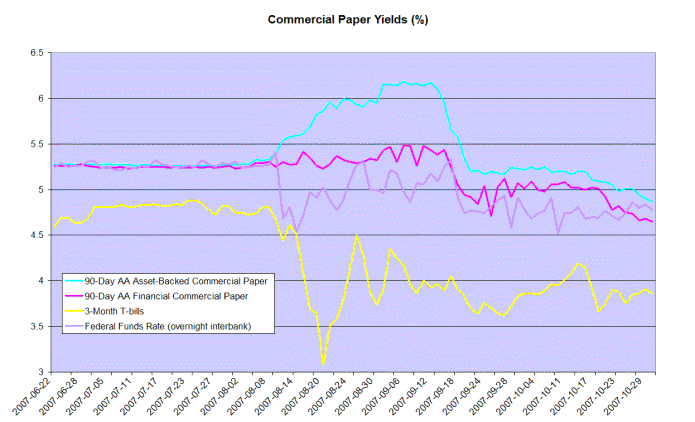
GDP Growth
GDP growth came in at a healthy (annualized) 3.9 percent for
the quarter. When we look at the percentage change on an annual
basis (2007 Q3 compared to 2006 Q3) we can see why the Fed
chose to proceed with the rate cut. Private residential
investment has fallen sharply, even when compared to the
previous two recessions.
The difference between 2007 and 1991 is the resillience of
durables and non-residential investment (though defense
spending has also played a part). We need to keep a weather eye
on these two sectors for signs of slow-down, which would warn
that the economy is sliding into a recession.
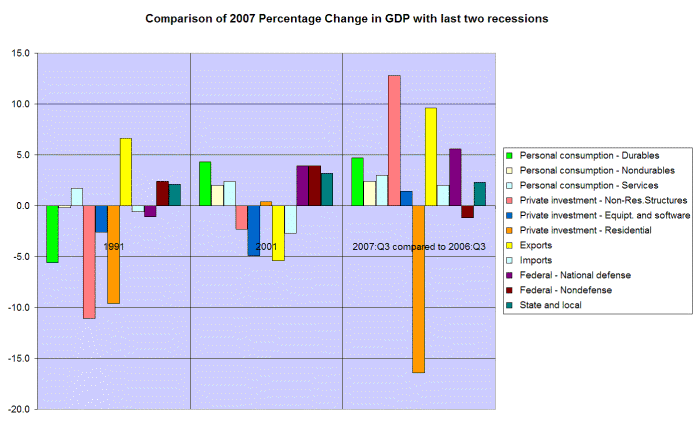
Source: Bureau of Economic Analysis
The 2001 recession can be ignored for purpose of comparison. It is not atypical and can largely be ascribed to the aftermath of Y2K, with a decline in equipment & software investment and a similar fall in exports.
The Yield Curve
Ten year treasury yields are recovering as a result of the rate
cut and consequent weakening of the dollar.
The yield differential remains positive as a result of the
sharp decline in short-term yields, reducing the pressure on
bank interest margins.
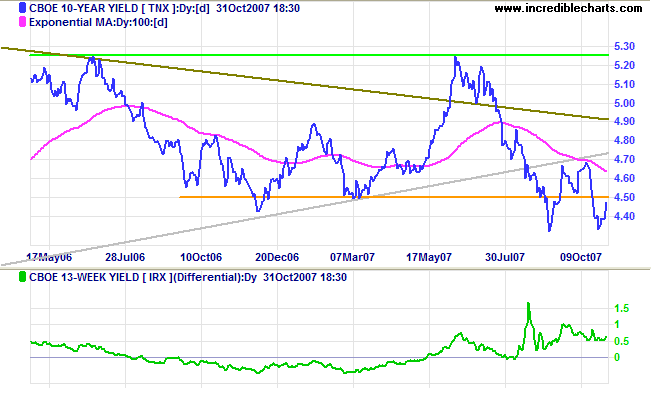
Jonathan Wright's recession prediction model indicates the probability of a recession in the next four quaters has fallen to a low 19 percent. The model is based on the nominal level of the fed funds rate and the yield differential between 10-year and 3-month treasuries. As such it fairly accurately predicts a decline in the availability of credit caused by a narrowing of bank interest margins. However, it will not reflect a decline in availability of credit caused by other factors, such as a collapse of the commercial paper market. Not all recessions are atypical, as I pointed out earlier. While the model remains a useful tool, I believe that it underestimates the risk of recession in the present environment.
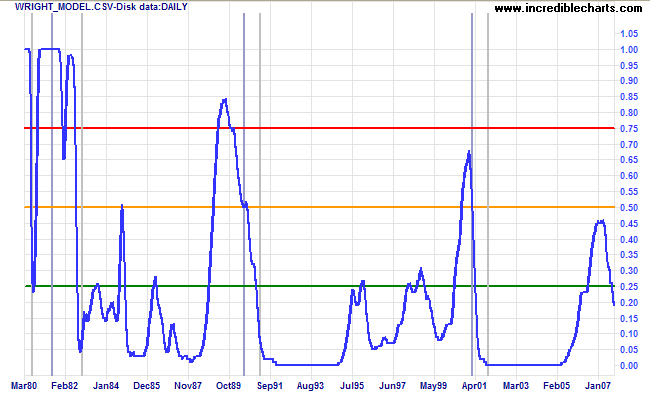
Corporate Bond Yields
The spread between high-risk and low-risk corporate bond yields is another useful warning sign. Note how the spread between AAA and Baa bonds spiked sharply upwards in 1990, 1998 and 2001 — reflecting concern about the impact of a down-turn on lower-ranked corporates.
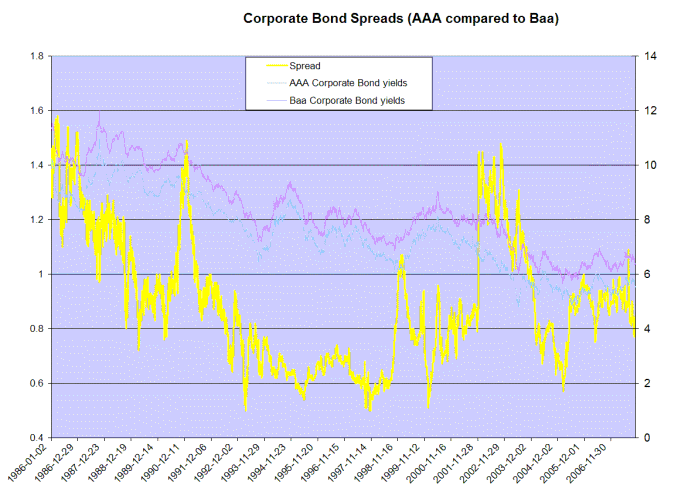
The current low 85 point spread is positive sign, reflecting no immediate concerns about debt servicability.
Let me issue and control a nation's money and I care not who
writes the laws.
~ Mayer Amschel Rothschild
To understand my approach, please read Technical Analysis & Predictions in About The Trading Diary.

Author: Colin Twiggs is a former investment banker with almost 40 years of experience in financial markets. He co-founded Incredible Charts and writes the popular Trading Diary and Patient Investor newsletters.
Using a top-down approach, Colin identifies key macro trends in the global economy before evaluating selected opportunities using a combination of fundamental and technical analysis.
Focusing on interest rates and financial market liquidity as primary drivers of the economic cycle, he warned of the 2008/2009 and 2020 bear markets well ahead of actual events.
He founded PVT Capital (AFSL No. 546090) in May 2023, which offers investment strategy and advice to wholesale clients.
